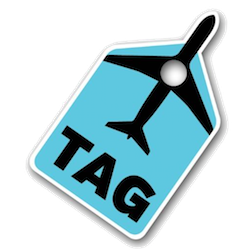 An independent analysis – funded by Heathrow – has confirmed that communities around Twickenham and Teddington are being exposed to higher levels of noise disruption from Heathrow’s flight paths, and identified trends in air traffic that suggest it is likely to get worse.
An independent analysis – funded by Heathrow – has confirmed that communities around Twickenham and Teddington are being exposed to higher levels of noise disruption from Heathrow’s flight paths, and identified trends in air traffic that suggest it is likely to get worse.
The report, by PA Consulting, published on 15th October, was commissioned and funded by Heathrow, following pressure from the Teddington Action Group. Examining data between November 2011 and May 2015, it has found that planes are flying overhead in greater concentration, in greater numbers and lower than previously, and that the periods of greatest disruption are increasingly late at night and early in the morning.
Rather than being associated with the 2014 Flight Path Trials, which saw record numbers of noise complaints from residents, the report states that these developments merely reflect the general trend of air traffic movements *.
TAG spokesman, Paul McGuinness said:
“In the wake of 2014’s Flight Trials, Heathrow told us that noise disruption would revert to pre trial levels; but this independent report confirms the experience of residents, establishing that communities around Twickenham and Teddington are being exposed to greater levels of noise disruption from Heathrow than ever before. More worrying, the report indicates that this disruption flows from new flight trends, so it’s only likely to get worse”.
The Report entitled “Teddington Flight Path Analysis Final Report” finds:
1. A significant intensification of the use of flight paths over some parts of Twickenham & Teddington
2. That substantially more planes are using the Dover Route, resulting from changes in the airlines’ use of ‘slots’.
3. That air traffic in all 3 overflying routes (Dover, Midhurst and Southampton) have become more concentrated
4. That the average height of planes is lower than before
5. That the fleet is changing – most notably with a marked increase in the use of heavier, noisier planes, notably A380s – and that these fleet changes have already started to make matters worse.
6. That these larger fleet planes (due to their huge size) are being allowed to fly with stepped ascents (contrary to CAA guidance and the presumptions in the Industry Code of Practice 2012)**
7. That these lower, noisier departures are being concentrated at the start and end of schedules
TAG spokesman, Paul McGuinness said:
“Not only are the noisiest long haul planes flying over lower than before, sometimes at little more than 2,000 feet in Teddington and 1,400 feet in Twickenham, but there are more of them and they’re flying overhead at the most disruptive times, early in the morning and late at night”
“For those who were nonplussed by the Airport Commission’s decision to exclude areas like Teddington from their Noise Map, this reasoned report, which is actually based on real evidence, makes the Commission’s work look nonsensical and shoddier still”.
Dr Tania Mathias addresses Parliament
On 19th October, local MP, Dr Tania Mathias spoke the following words in the chamber of the House of Commons***:
“It is only because of the Teddington Action Group that a report was produced on 15 October showing the trend even without the trials. The trend is about 83 dB for A380s. As my medical colleague, my hon. Friend the Member for Bracknell, will know, 57 dB causes medical problems. There is no mitigation for 83 dB. There cannot be mitigation when aircraft are flying at 1,423 feet. There is no mitigation when most of the noise pollution at a medically dangerous level is happening before 8 o’clock in the morning and after 8 o’clock at night.” (Hansard)
* “However, there are underlying trends in the characteristics of the traffic which were observed before the trials and continued after the trials had ended. It is reasonable to conclude, therefore, that these trends are not due to the trials but are more general in nature” (Page 72)
** CAA R&D Report 9841 – and despite the 2012 “Industry Code of Practice” (signed by Heathrow, NATs and major airlines) stating that Stepped Climb Peocedures should not be operated unless absolutely necessary
***Adjournment Debate: Noise From Heathrow, 19.10.15
Dr Tania Mathias’s contribution to the 19th October 2015 Adjournment Debate can be viewed in two parts, on Links:
House of Commons discussion on Heathrow Noise – Part 1
House of Commons discussion on Heathrow Noise – Part 2


[…] Twickenham & Teddington are being subjected to increased levels of aircraft noise disruption […]
The noise level from the planes is increasing, reaching unacceptable levels, and happening late at night and early in the morning, disturbing sleep.